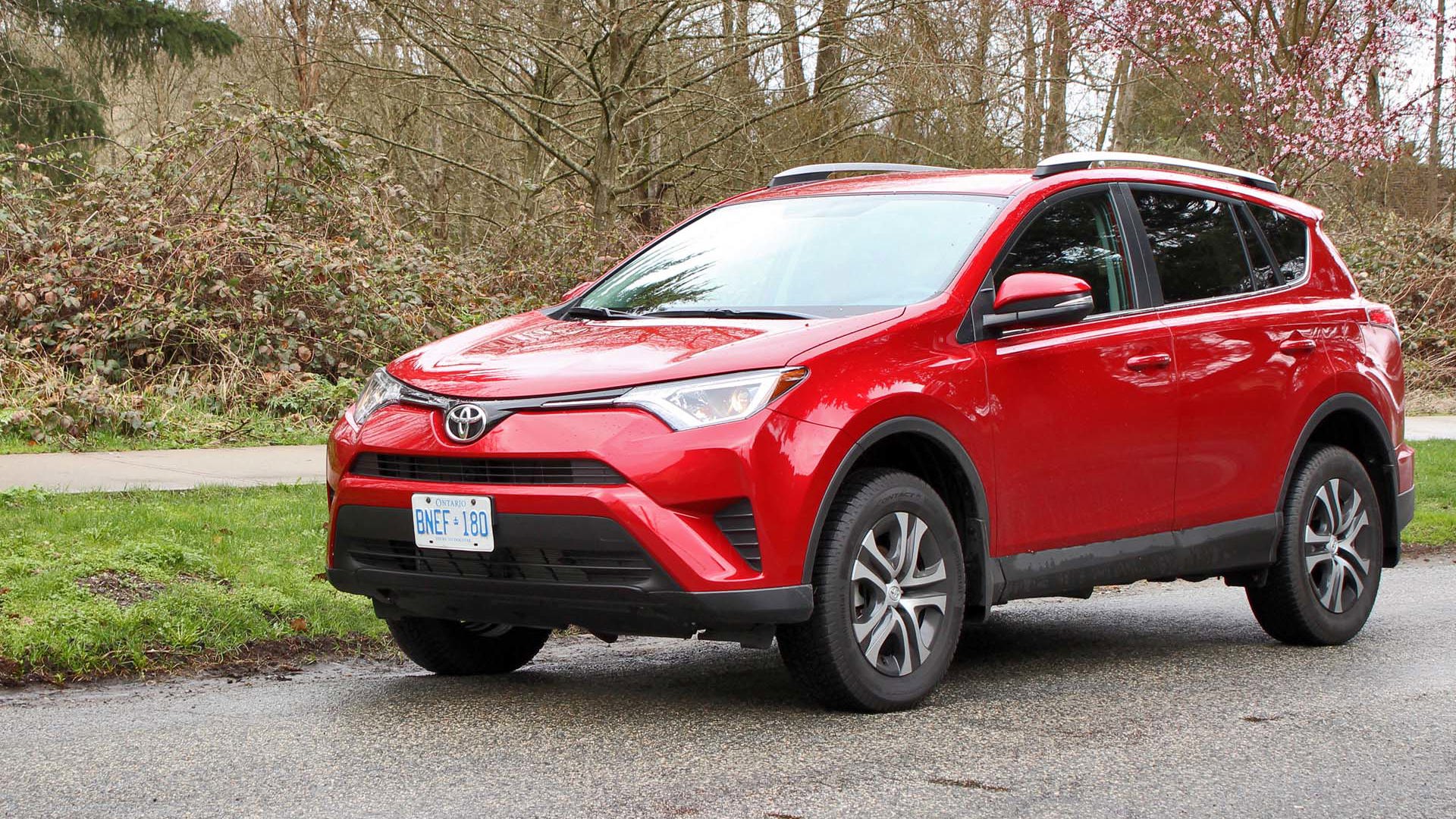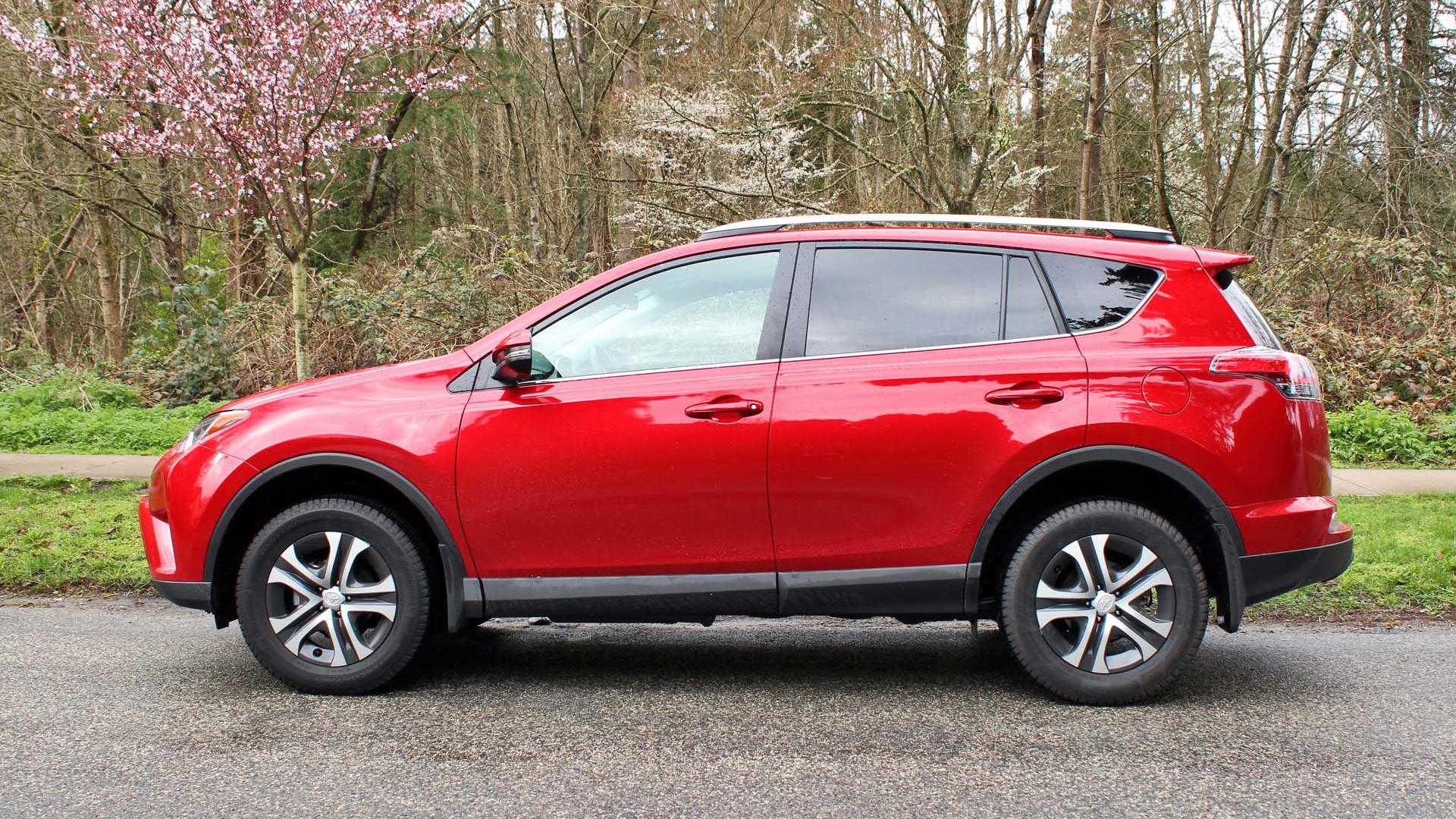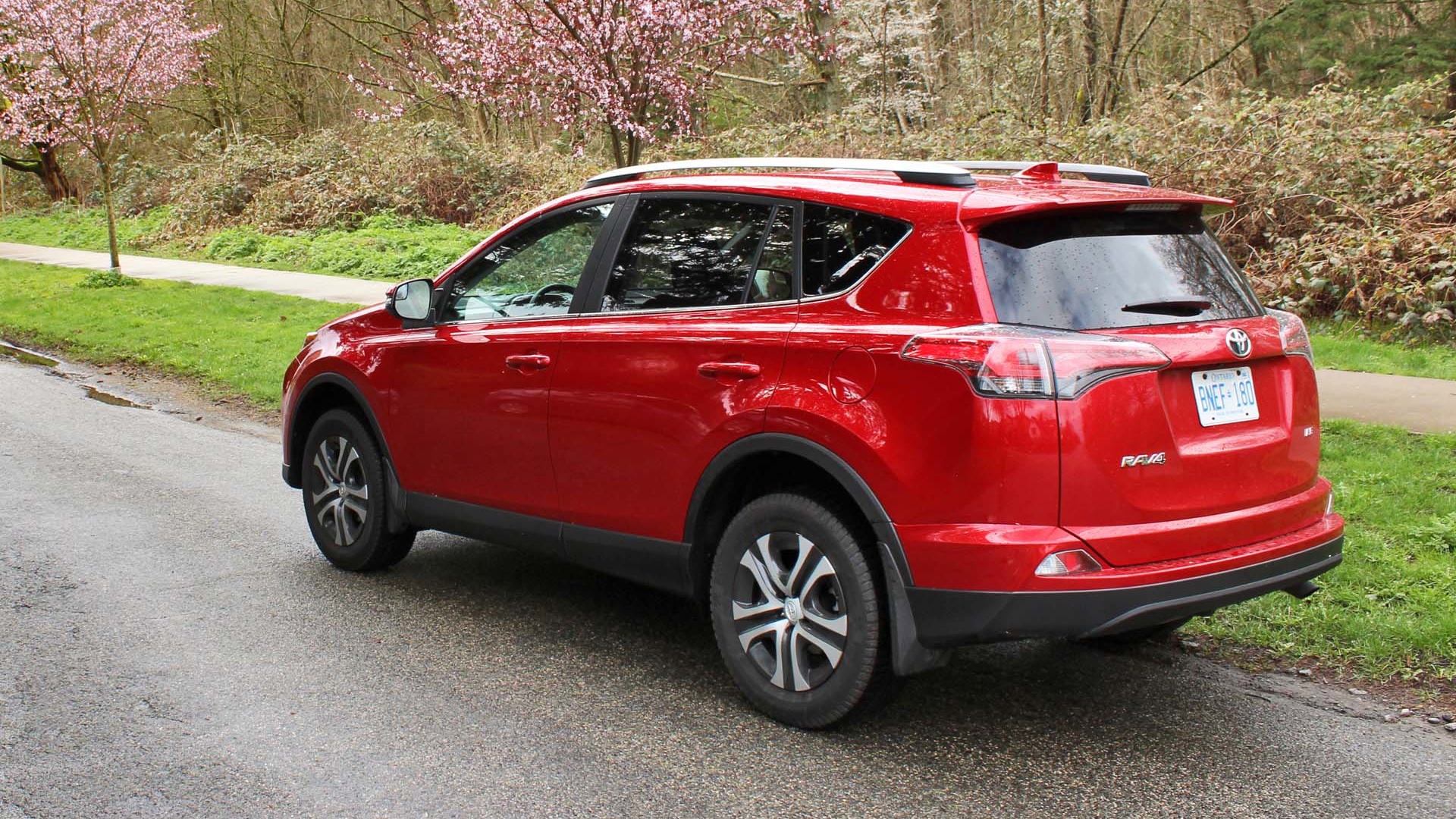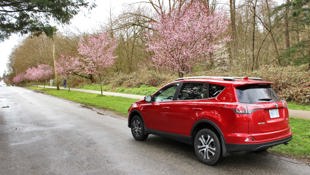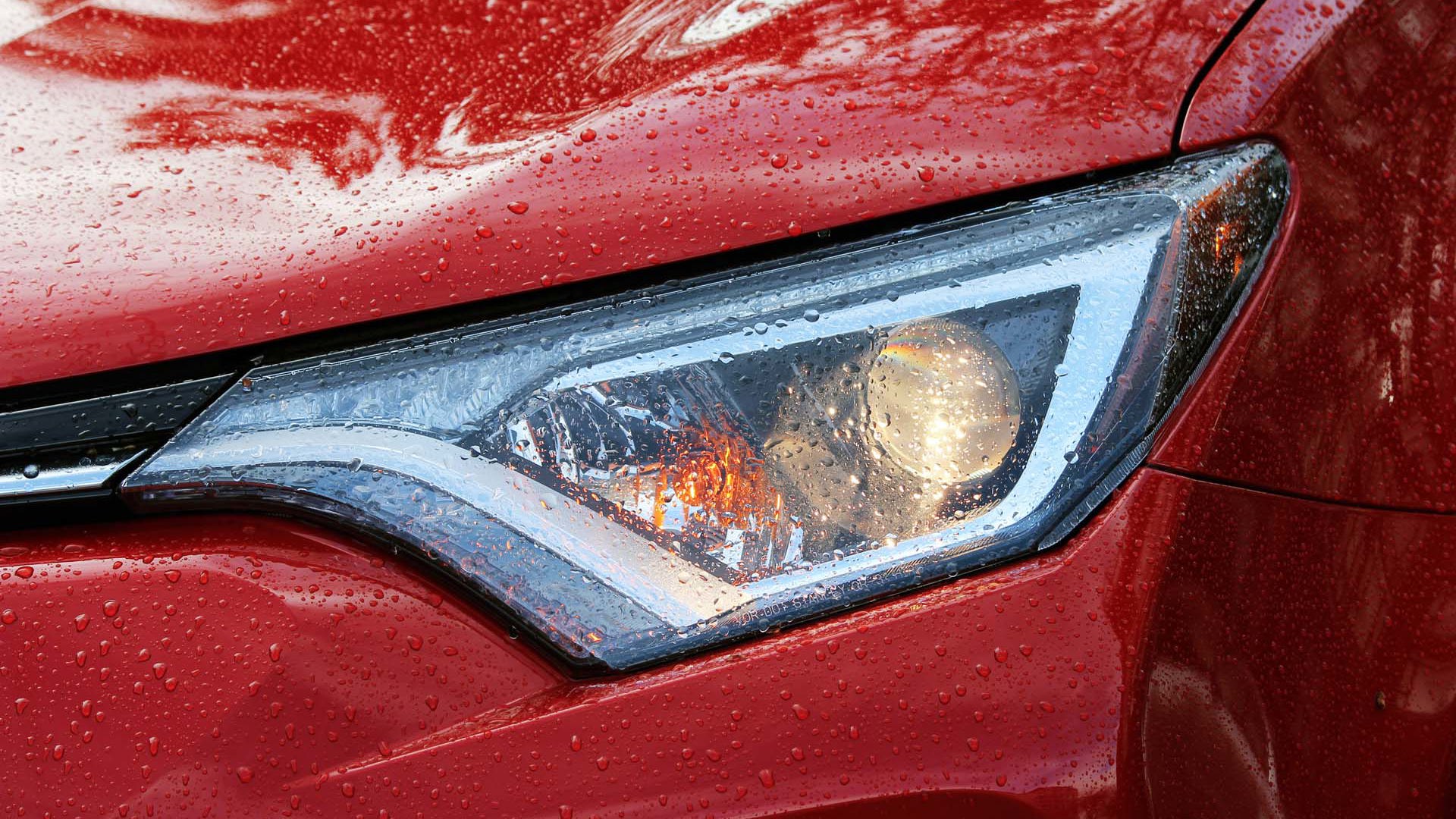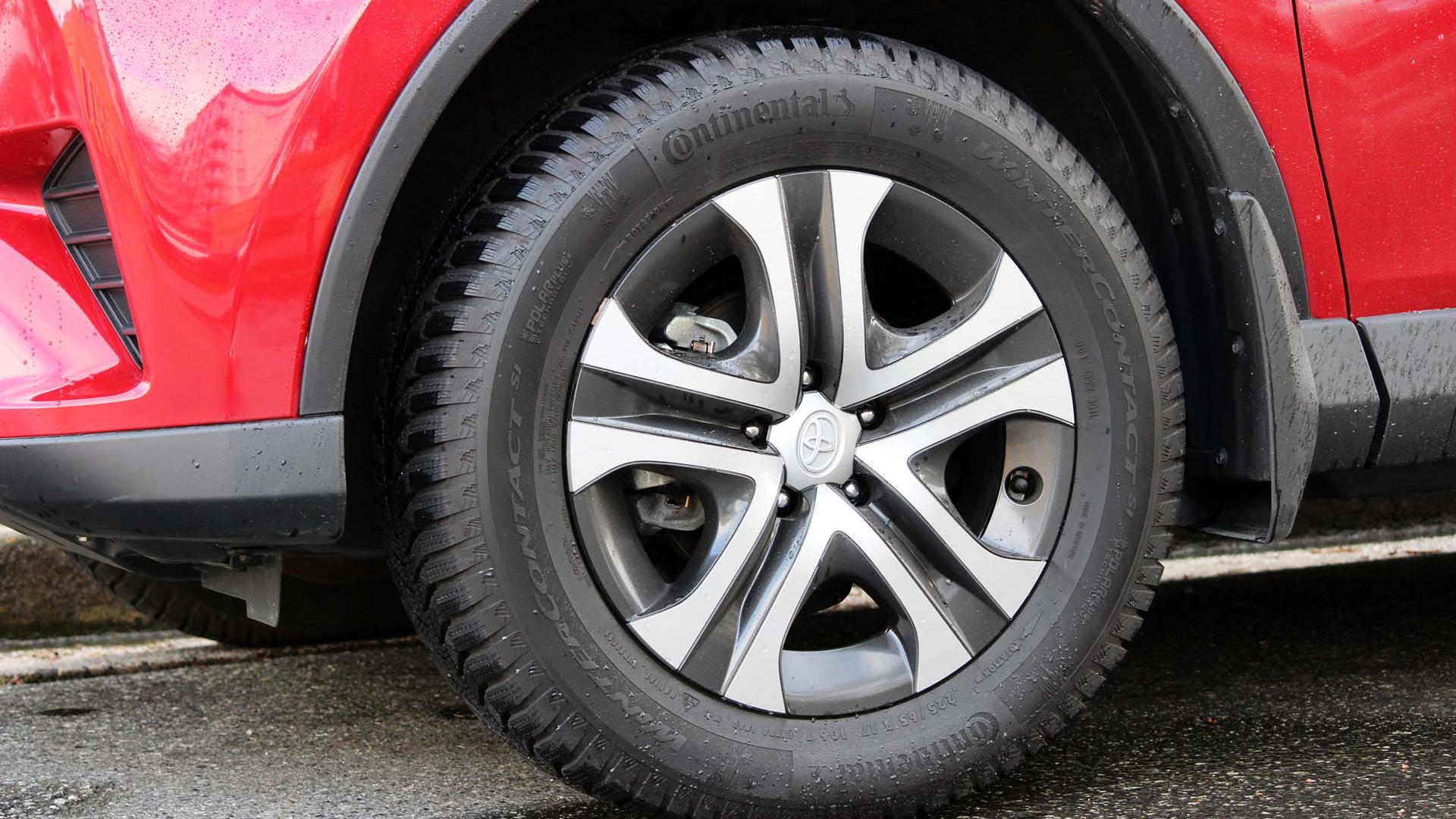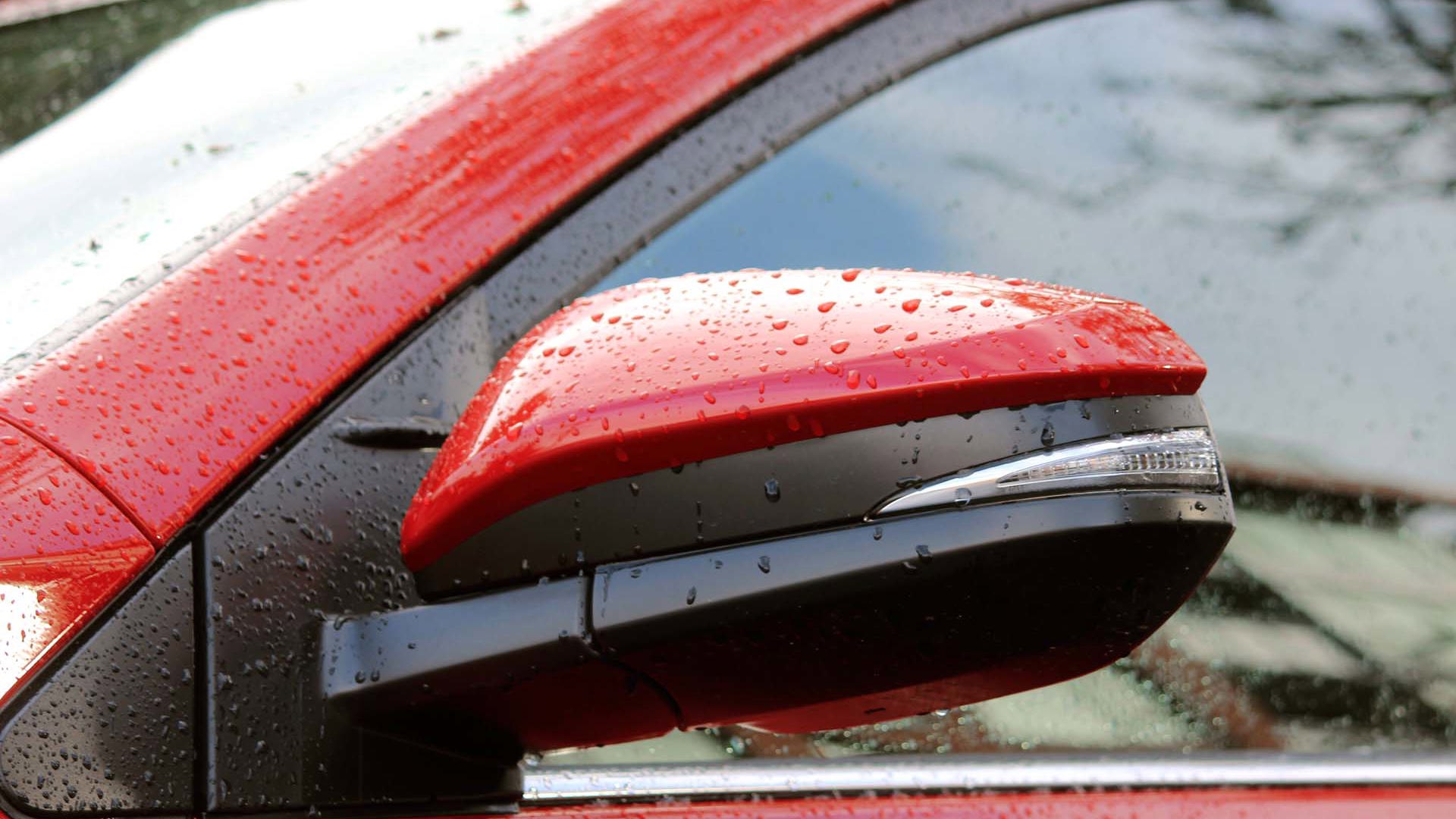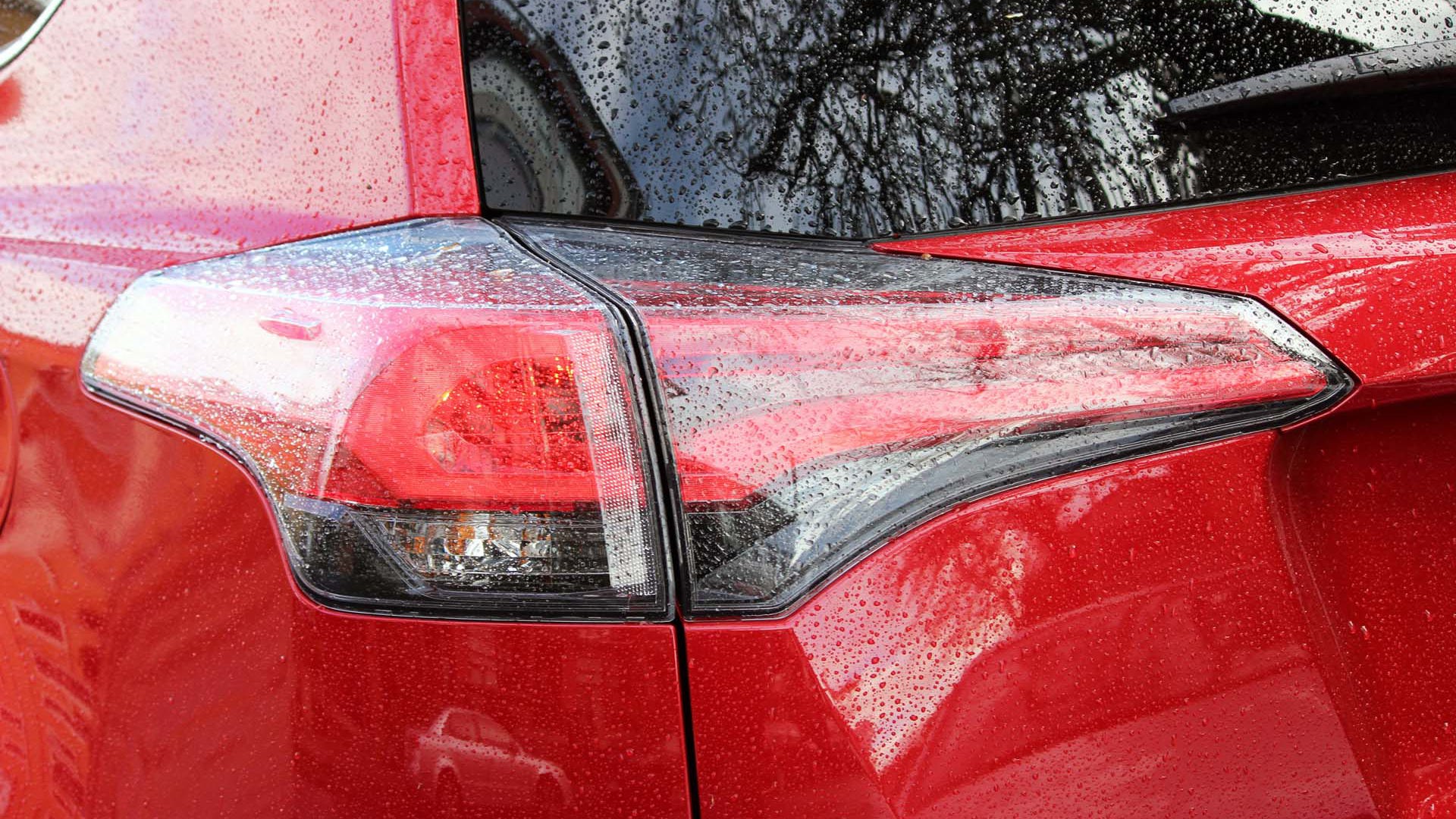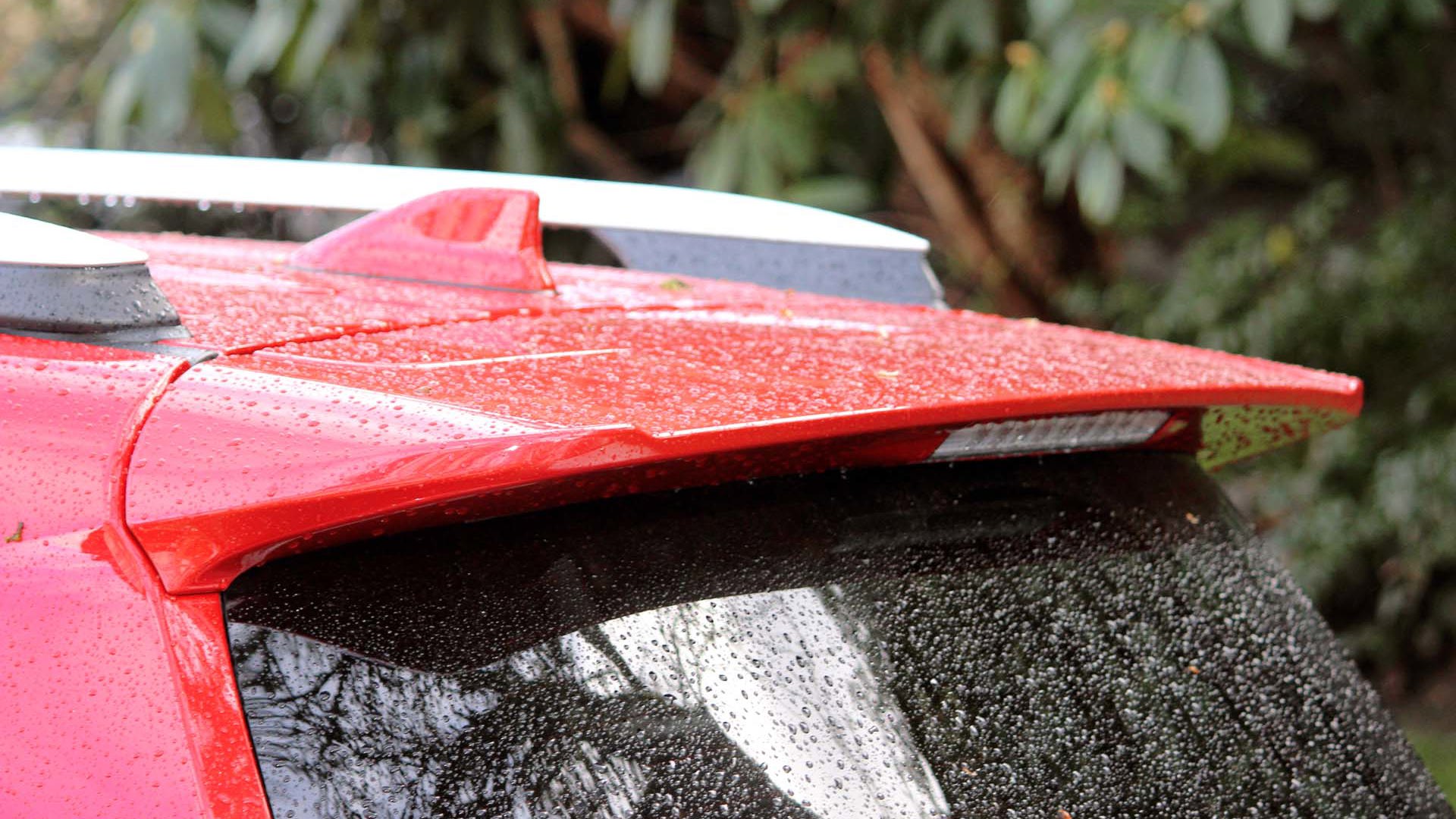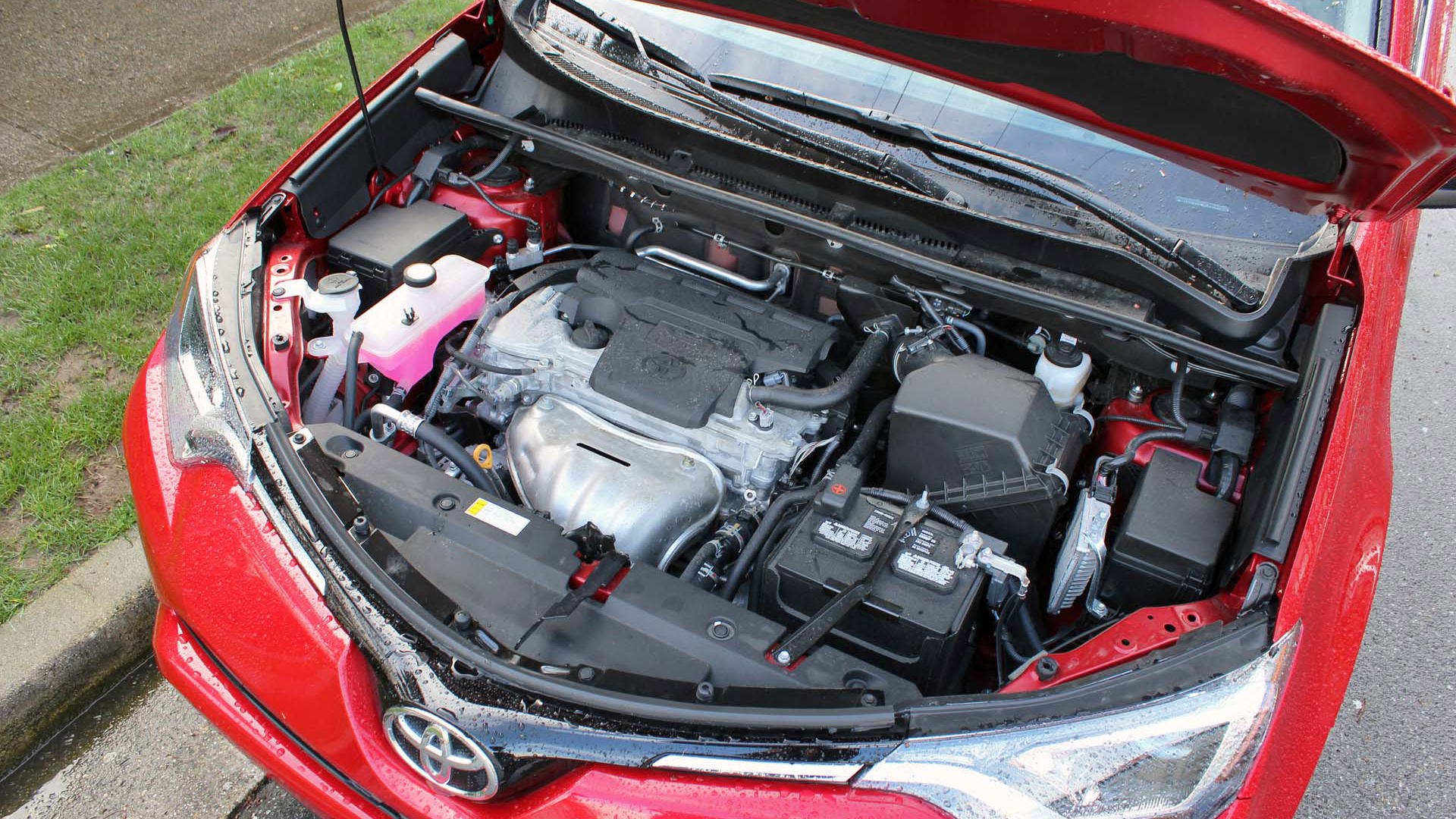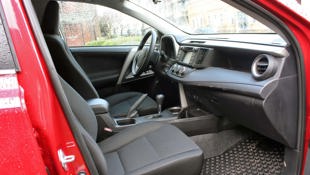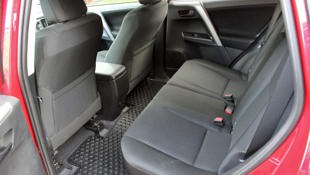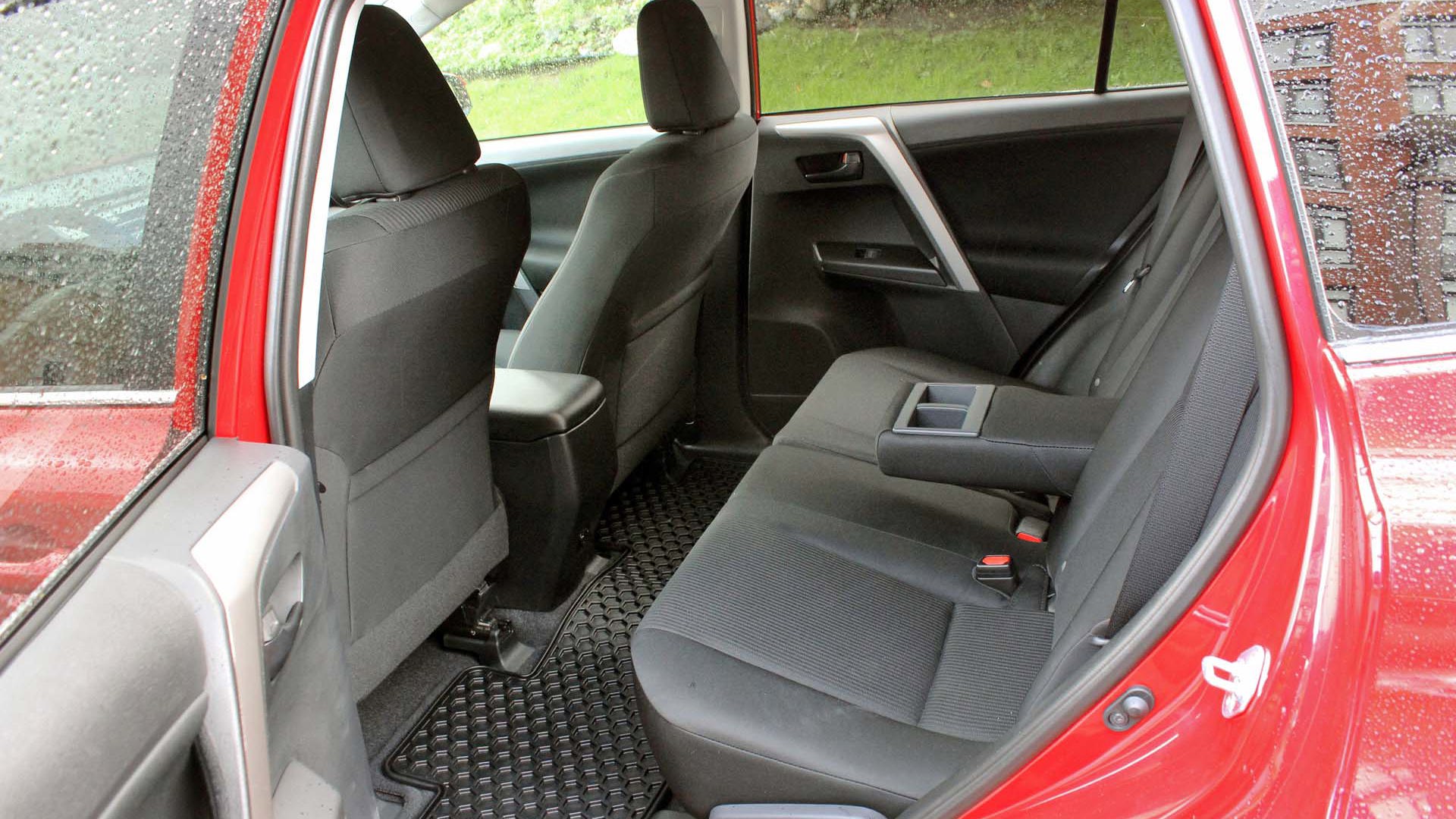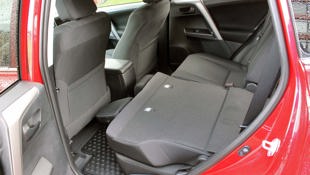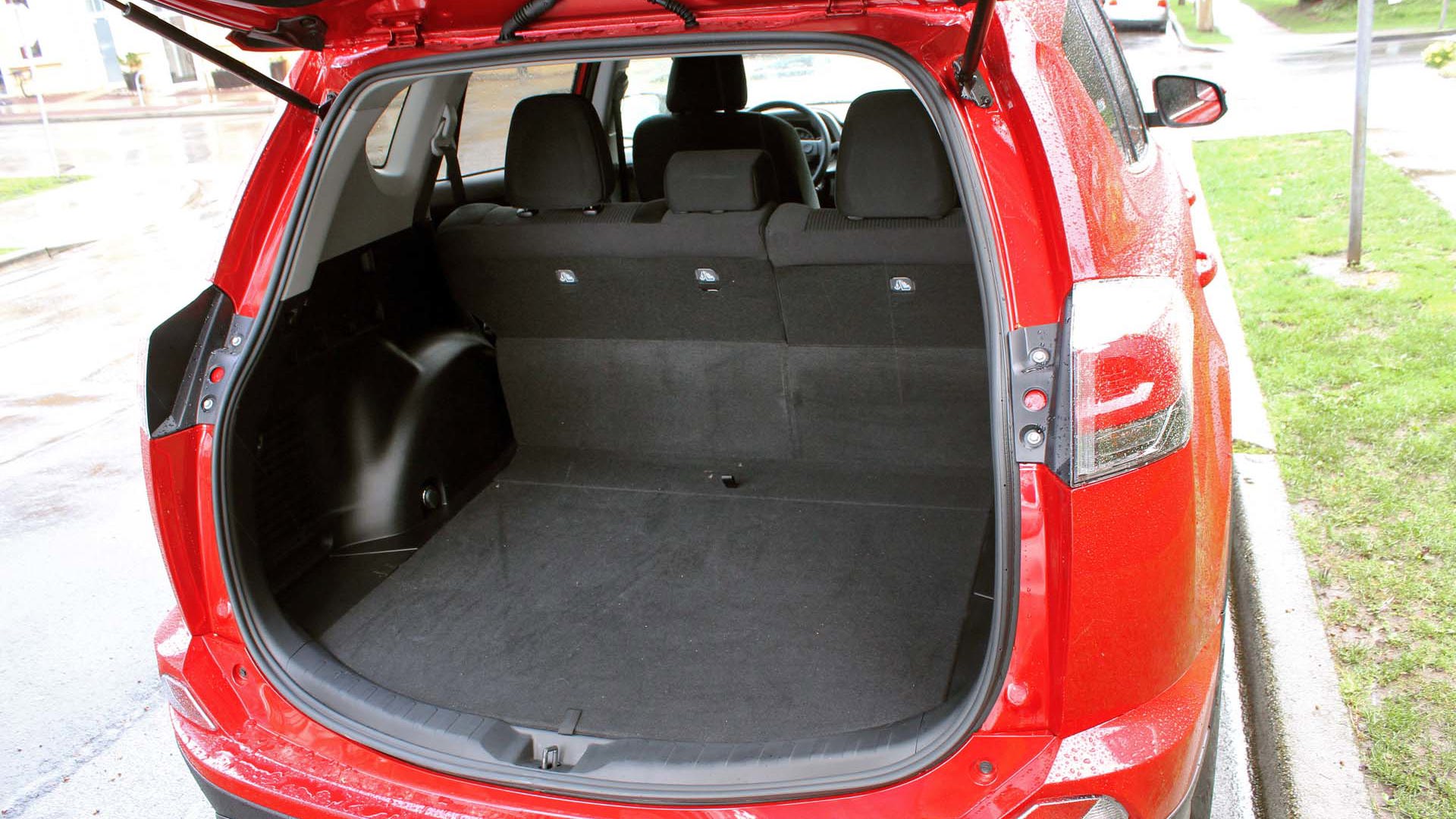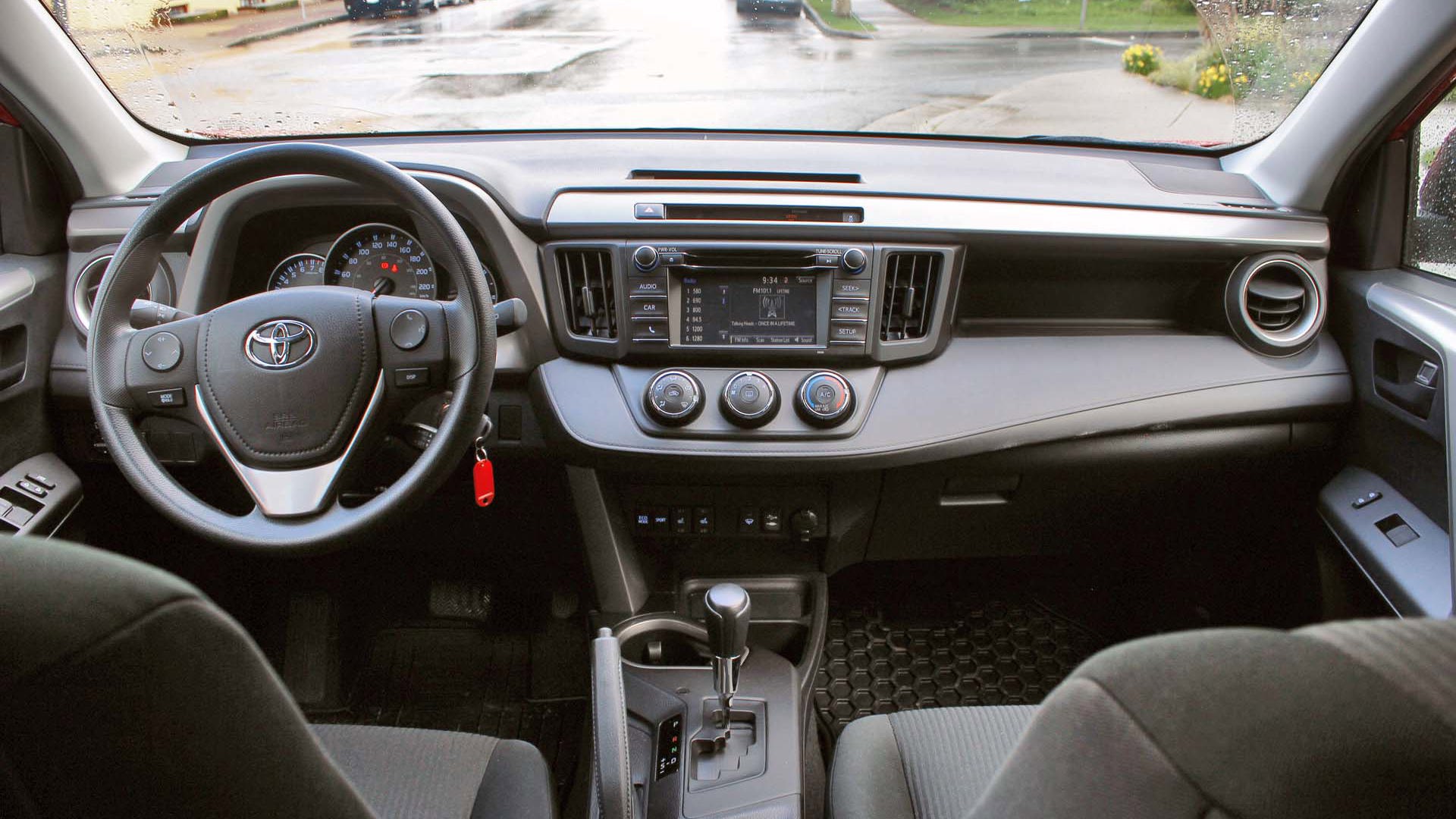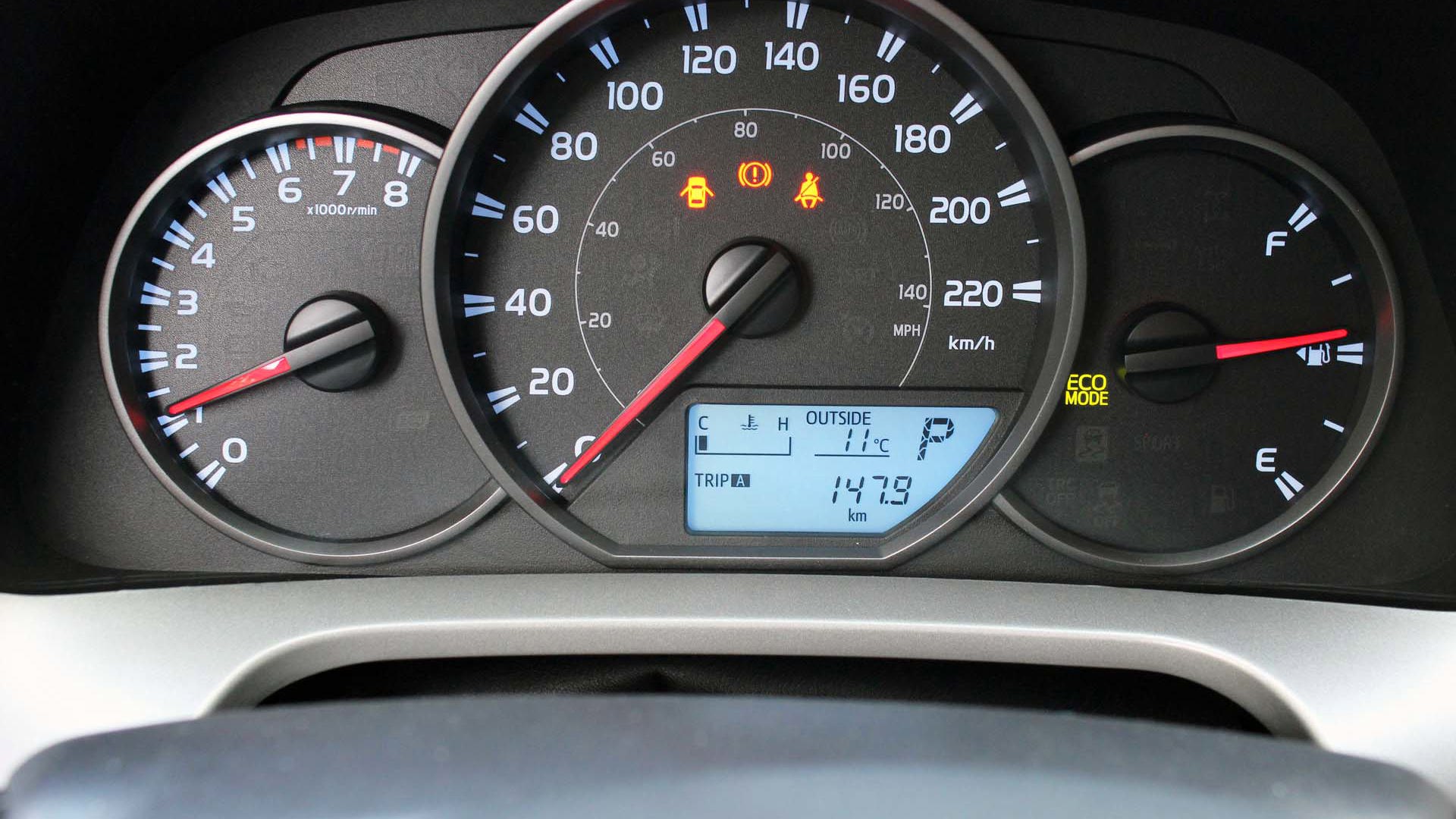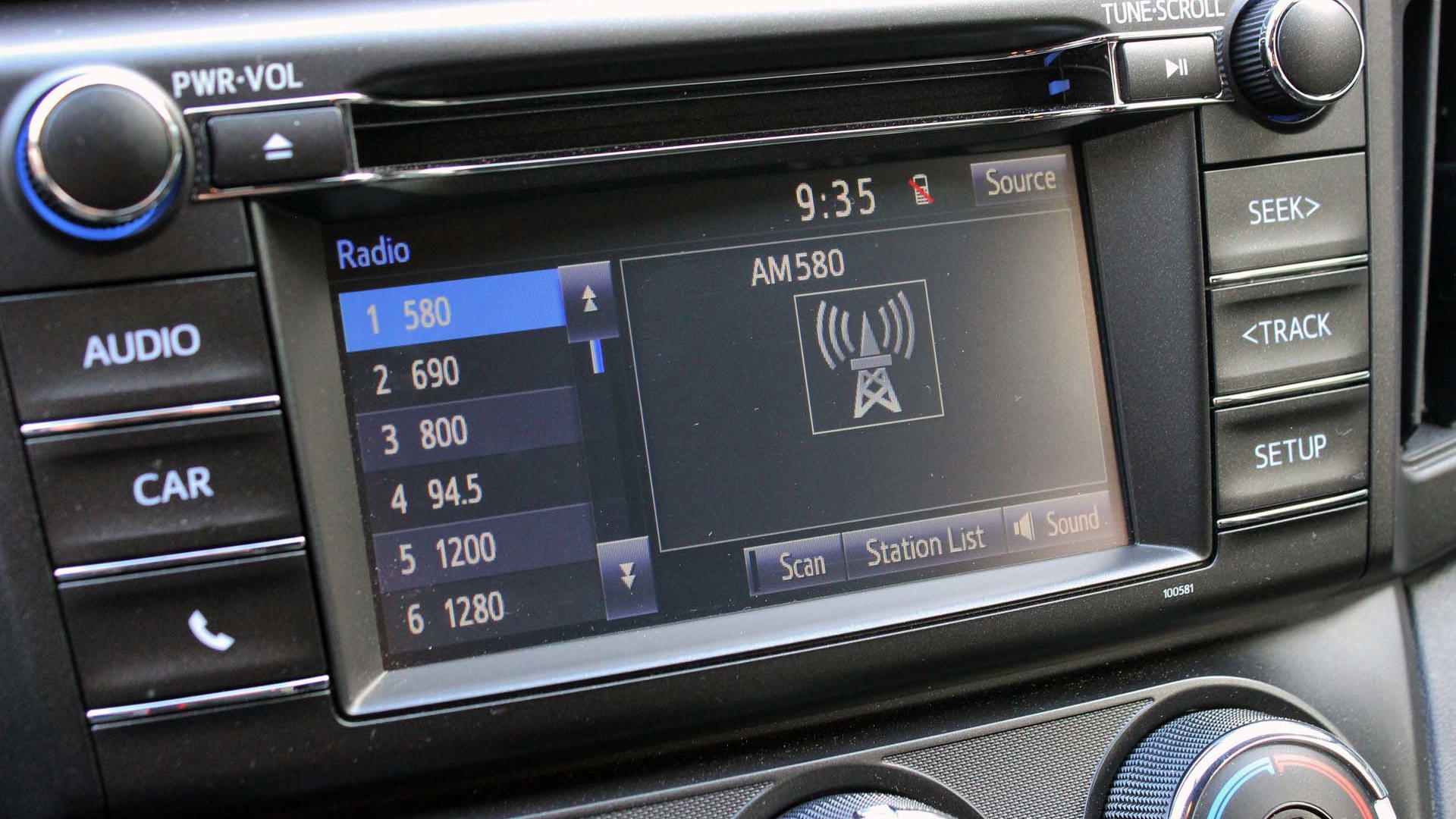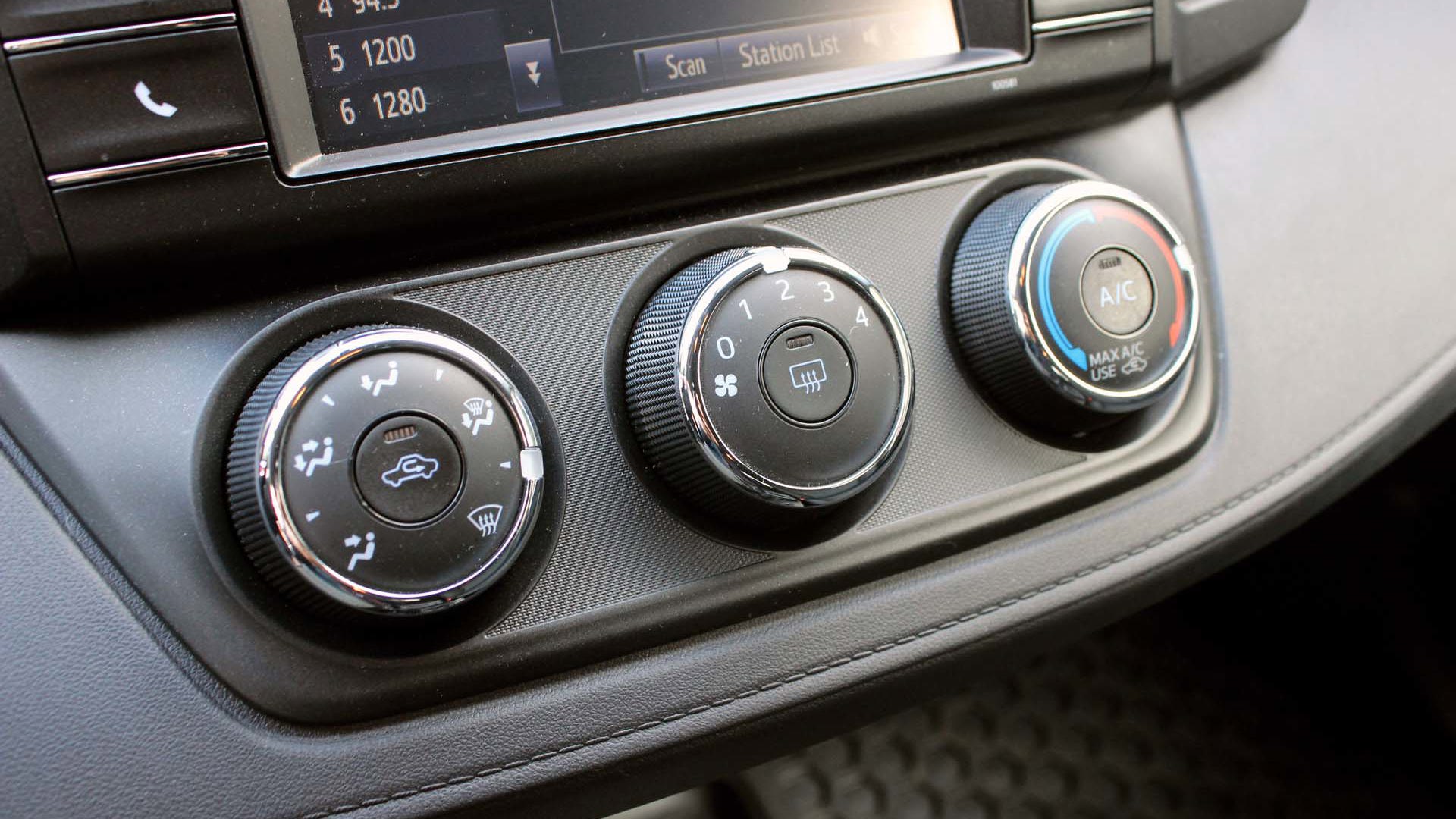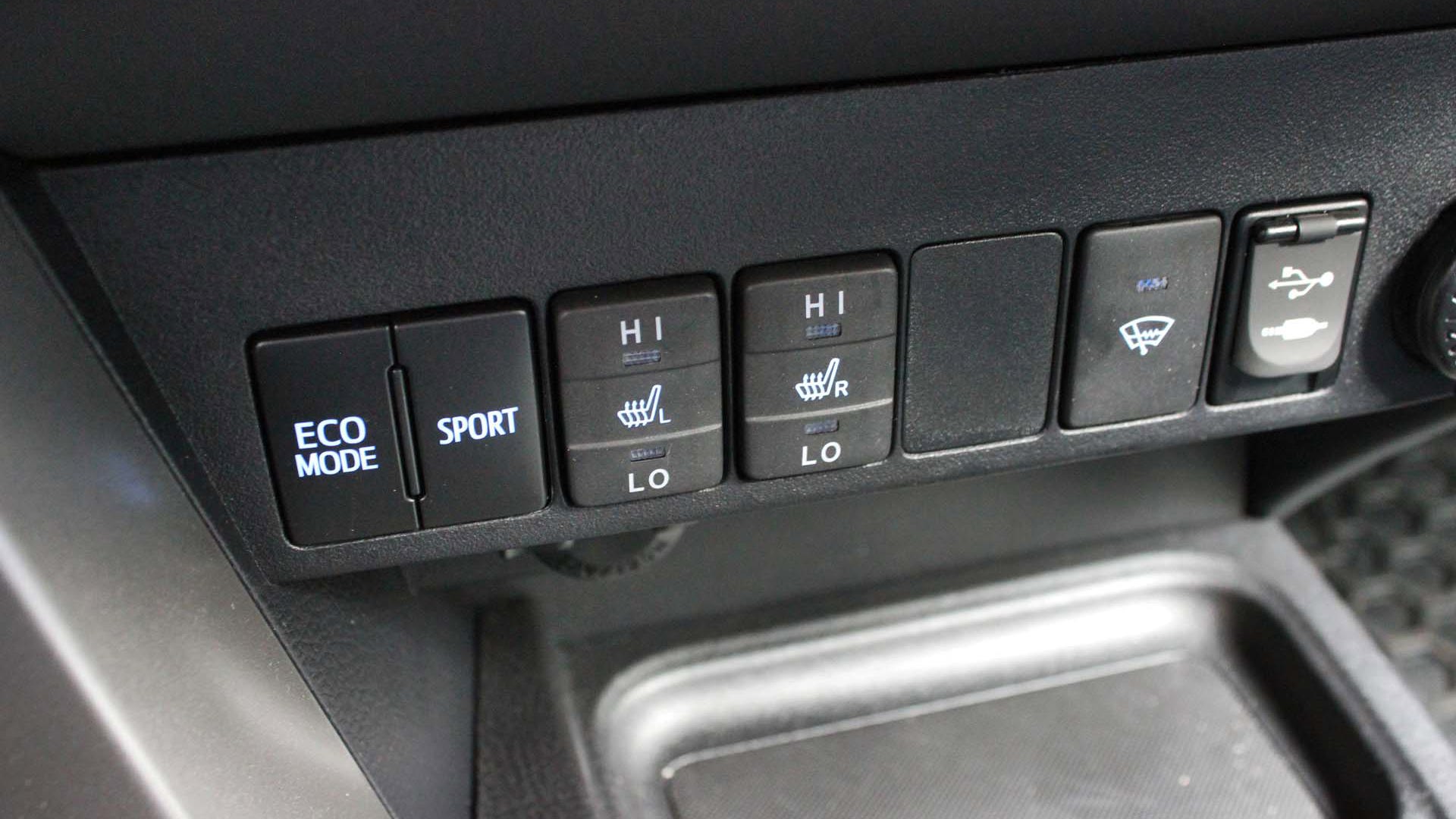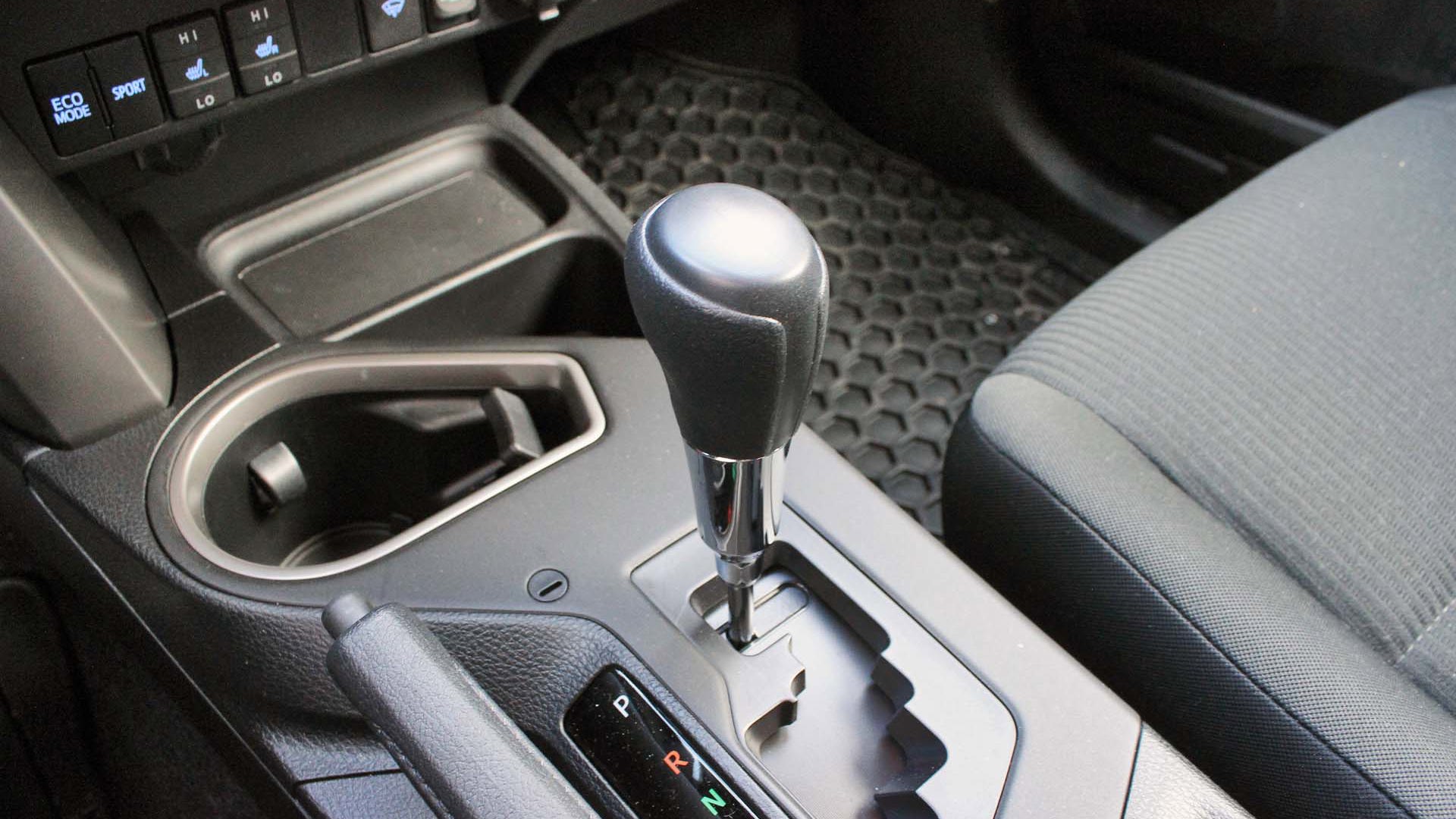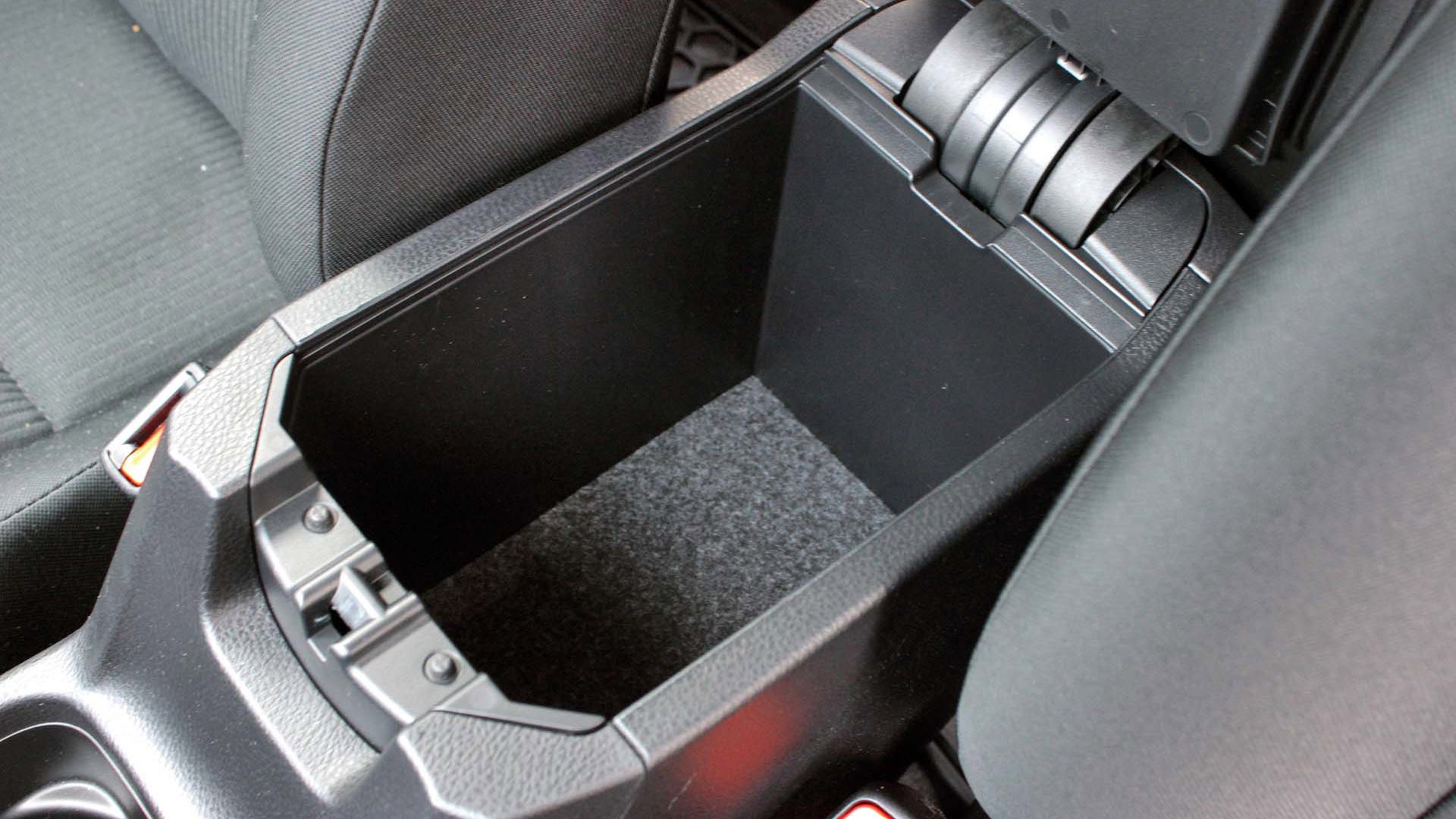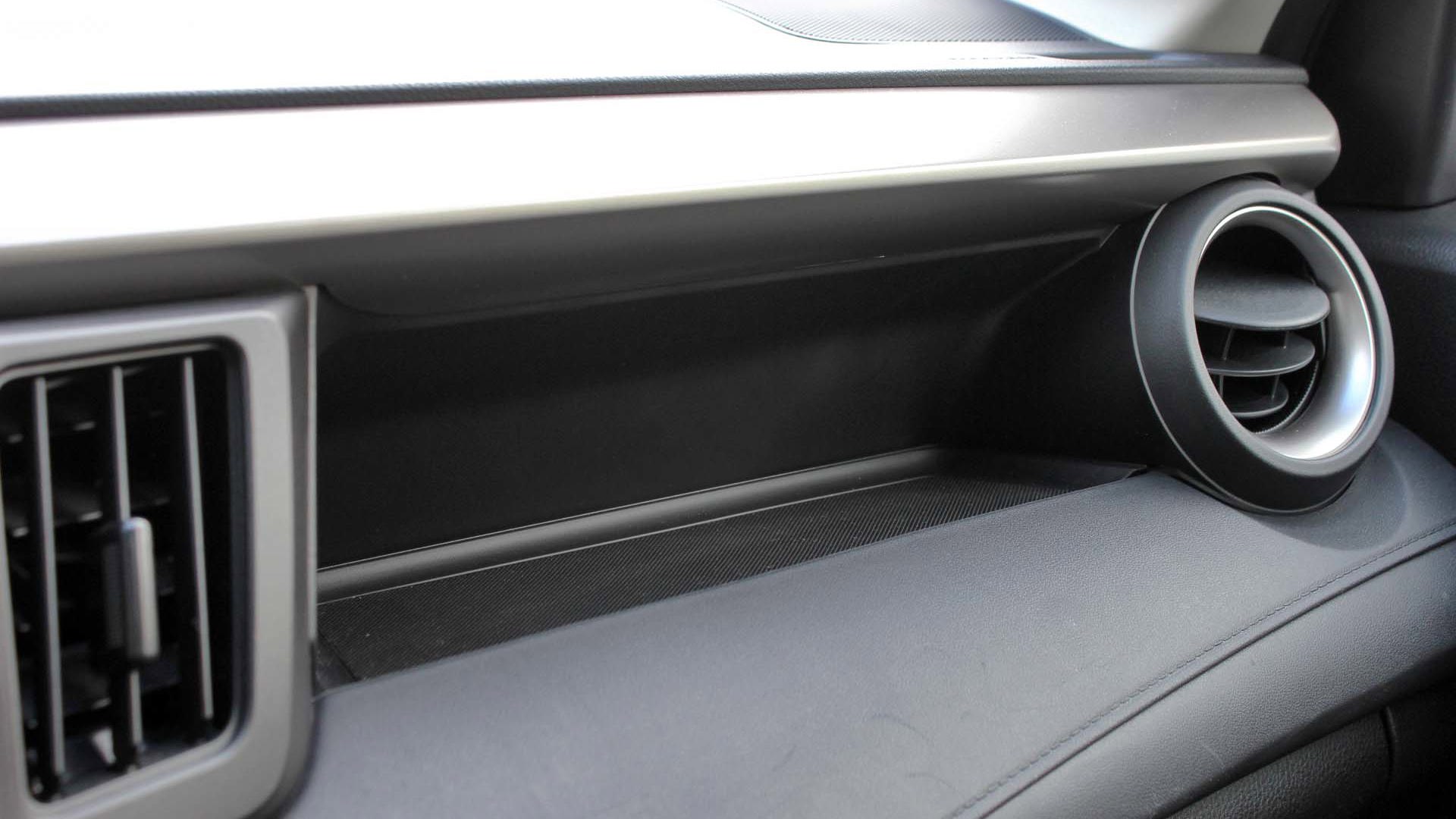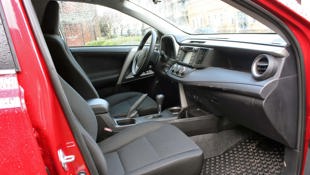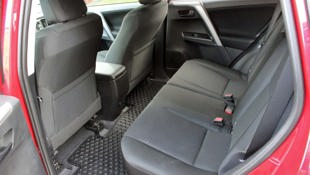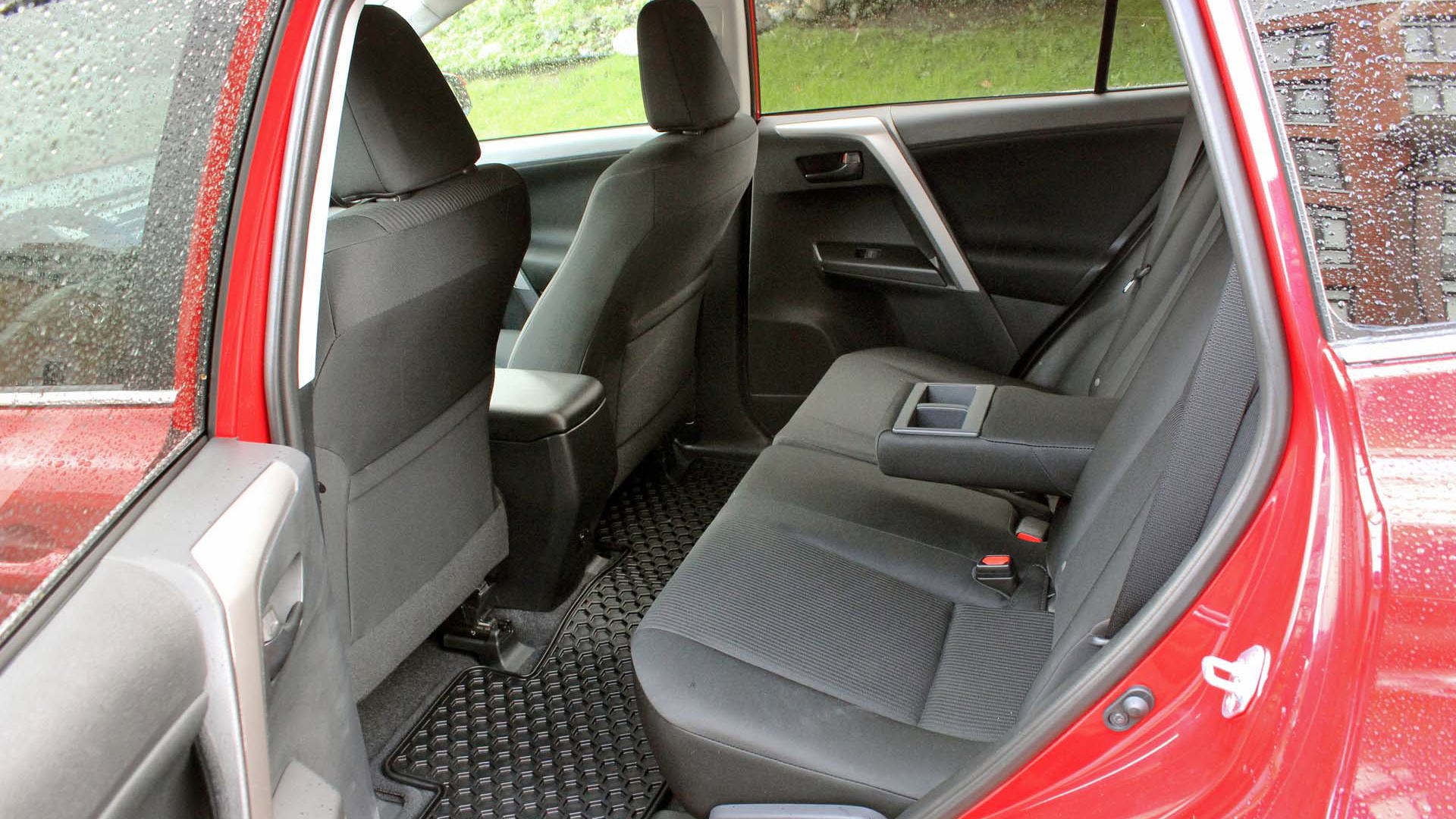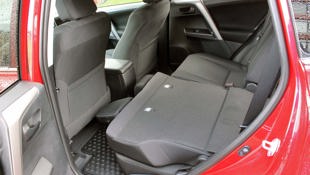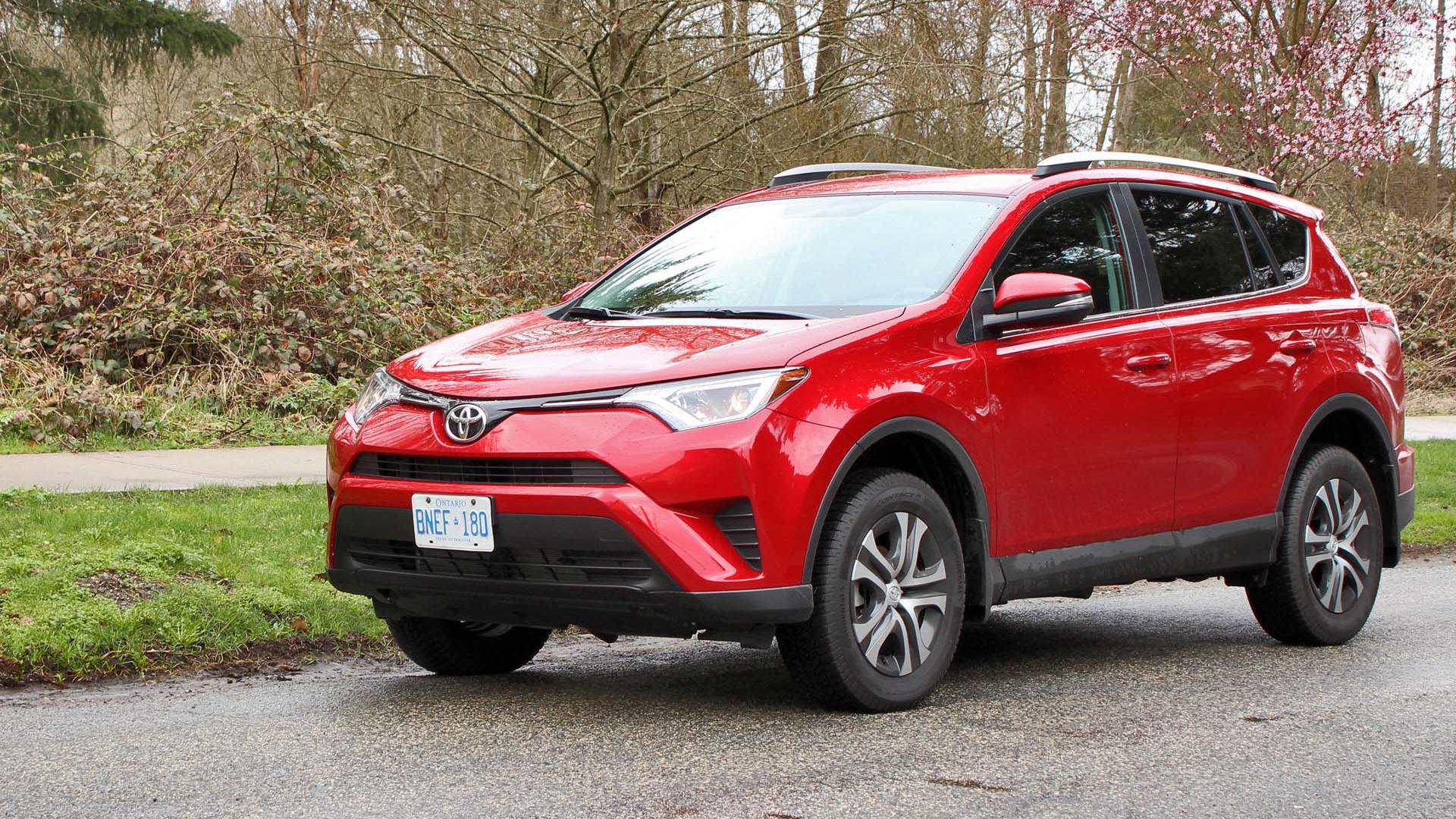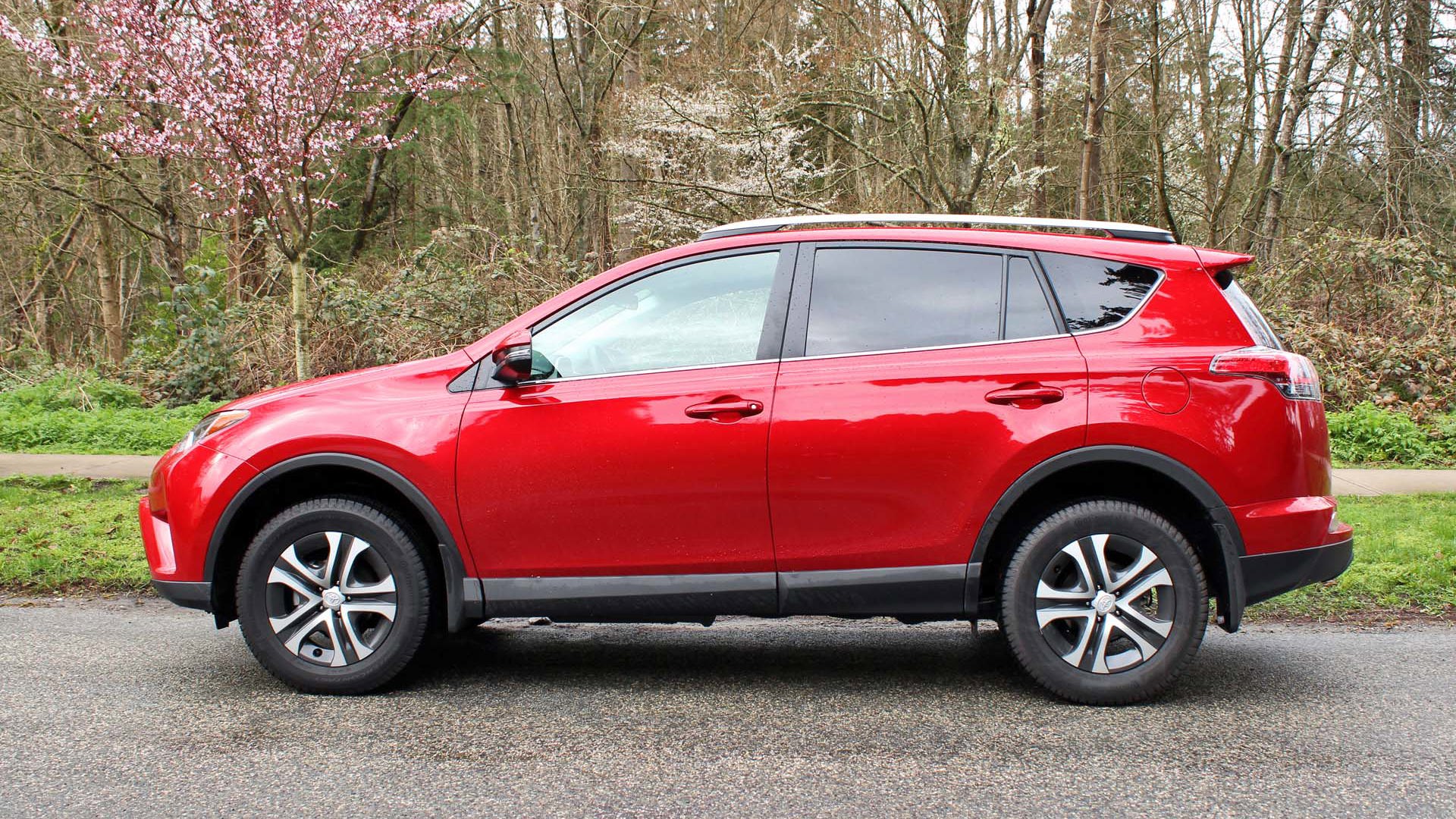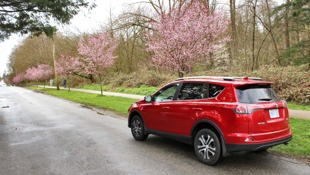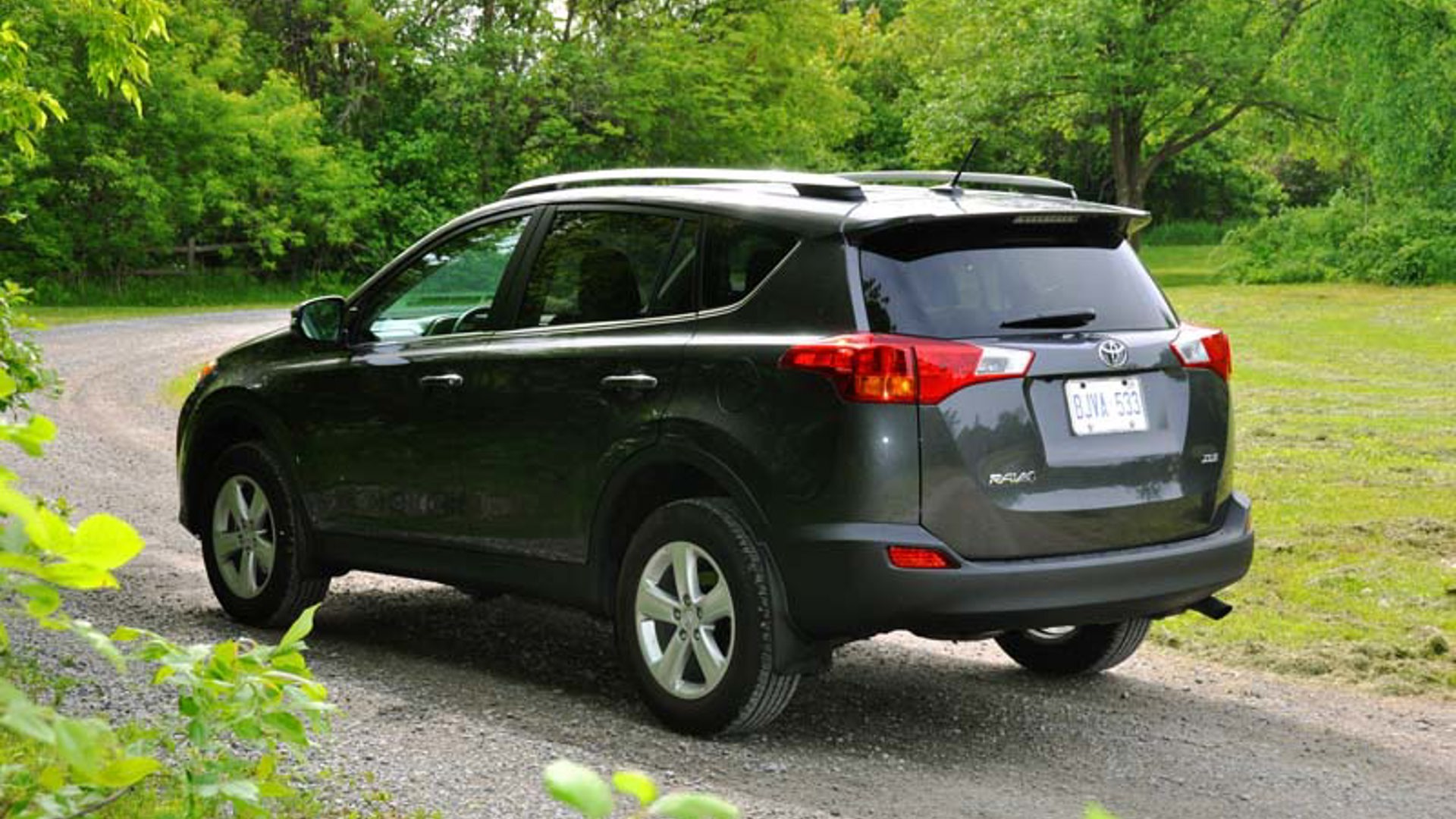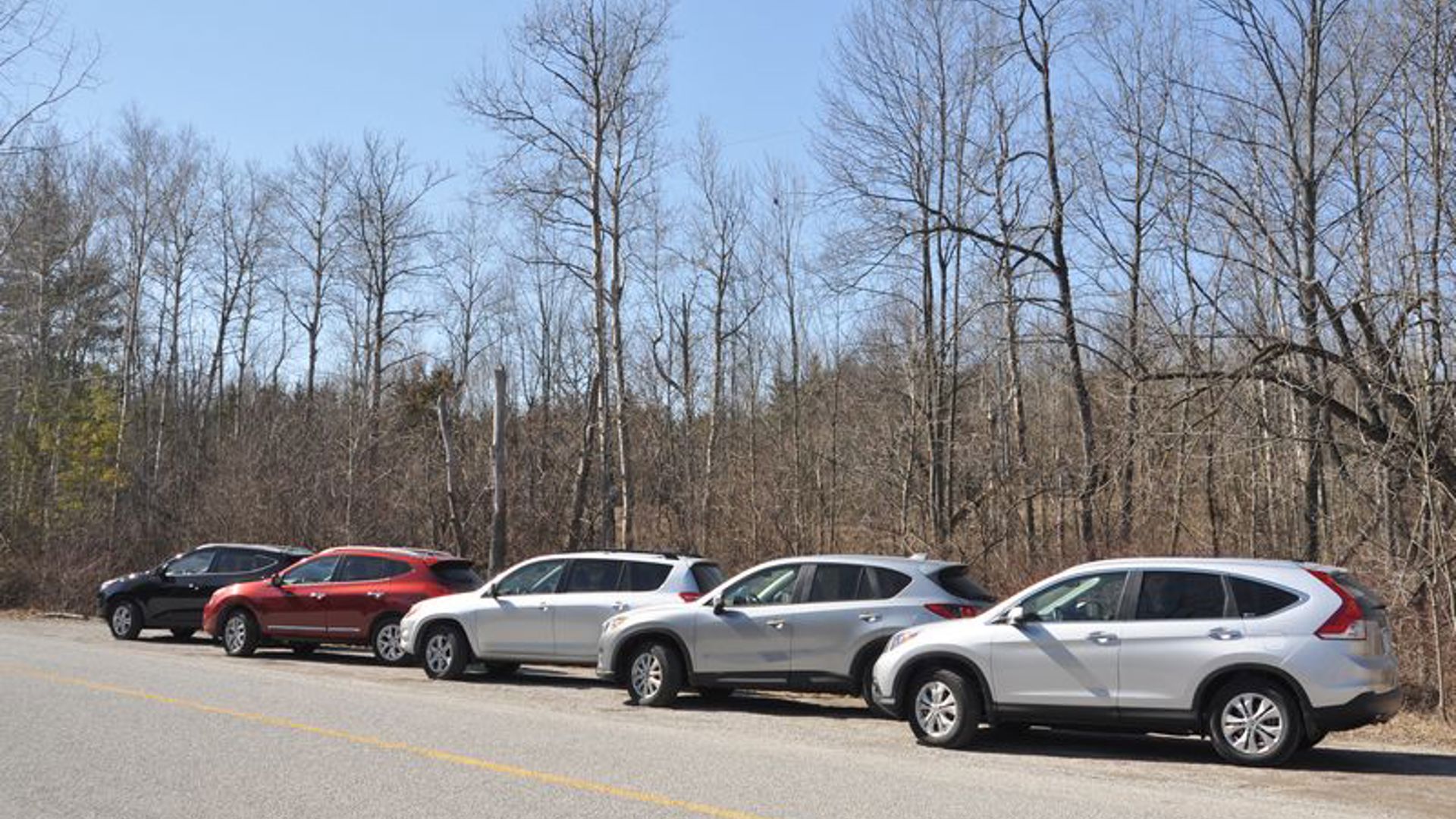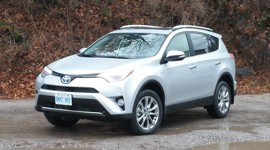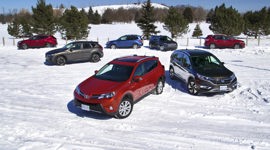 AutoTrader SCORE
AutoTrader SCORE
-
EXTERIOR STYLING8/10
-
INTERIOR7/10
-
FUEL ECONOMY8/10
-
PERFORMANCE5/10
-
COMFORT7/10
It’s just so easy, isn’t it? It would be too easy to fall into that trap of writing off the latest RAV4 as just the latest evolution of the crossover equivalent of a toaster; room inside for five, pretty good cargo space and the occasional tech flare in the form of USB ports, heated seats, maybe a backup cam.
I’m convinced that if I showed you one of the lenses on its own, you would never guess they belonged to Toyota’s vanilla crossover.
You wouldn’t be talking about the styling, though. Which is where that theory of “meh, it’s just the next version” kind of falls off the rails a little. Why? Because – and I may get yelled at for this – the latest RAV4 is actually a pretty good-looking car.
The front grille has been reduced – indeed, with a quick glance, you may not even realize the 2016 RAV4 even has a grille – to provide a clean-looking front fascia. It allows you to focus more on the newly styled headlights, and I’m convinced that if I showed you one of the lenses on its own, you would never guess they belonged to Toyota’s vanilla crossover. The Scion FR-S (sorry, Toyota 86), perhaps. Not a people mover like this, though. No way.
The theme continues around back, where clear taillight lenses with smoked frames, a standard – yes, standard – roof spoiler, tinted glass (new for ’16) and corner lights either side of the rear tailgate are all nice features. Some sharp new wheel options help finish the detailing off; even our tester’s blocky winter rubber couldn’t kill the vibe presented by the two-tone 17-inch rims on our ride. Yes, they are technically steel wheels with covers, but I’d say that’s pretty hard to spot for most folks.
Inside, though, it’s a little more of the same, especially considering that my tester was the base-base-base LE FWD model, meaning it doesn’t receive the swanky new gauge cluster that other models in the lineup get. Instead, it gets a spitting image of what was on the last car. Guess they had a few leftovers laying around. The button group at the base of the centre stack (your seat heater and drive mode controls reside there) looks the same, too, as do climate controls above that, made up of three large dials for your fan speed and temp. If you spec automatic climate control for your RAV4, however, that setup evolves into one made up of both dials and buttons. I did find my car’s controls nicely sized and well-damped, meaning little time spent fiddling with them or looking to see their settings. Our car had A/C and power windows and doors, too, which is nice.
Going green? Test Drive: 2016 Toyota RAV4 Hybrid Limited
Otherwise, the interior of this LE model returns pretty much unchanged from last year. That means a nice, tall driving position for a good view out from all angles (made even better by new blind spot-reducing convex wing mirror glass), plenty of headroom (just over 1,000 mm up front, and just under that in the rear) and a nice, airy cabin with broad, flared surfaces and neat touches like roundel air vents and leather dash inserts, providing a more upscale feel. Size-wise, everything from front and rear head- and legroom as well as storage remains exactly the same as last year.
I guess we’re going to have to wait until an all-new RAV4 arrives before we can get a little more space, especially in the back seats. The narrow bench back there makes seating two adults a bit of a challenge. I also found the pedal box to be a bit narrow, as I struck my shin on the centre-stack’s leading edge a few times before I smartened up and began exercising more caution upon entry.
The rear seating issue would be of greater concern if the area couldn’t be used for proper cargo storage. The rear seats fold completely flat with just a tug of a cushion-mounted lever, growing the cargo capacity from 1,090 L with the seats up, to 2,080 L once folded. They fold in a 60/40 split, and even with the driver’s seat adjusted for my tall frame, I didn’t have to remove the headrests, and they didn’t dig into the seatback once stowed. The cargo area’s liftover height, meanwhile, should pose few problems for most, which is a big plus in this segment.
Otherwise, the storage is good; the two front cupholders are at opposing corners of the centre console, so the drinks don’t battle for shared space. That’s good, as both have been enlarged so now instead of just fitting a Big Gulp, you could probably squeeze a Super Big Gulp in there without batting an eyelash. There’s also a handy pad at the base of the centre stack for the driver’s cell phone, and a grippy ledge above the glovebox for mobile devices, wallets or glasses.
I guess the centre console’s dual-tier storage bin could be a bit deeper, but there’s enough in the cabin as a whole to pack most items, if you’re willing to be creative. Plus, the shallower bin is easier to vacuum. Rear passengers get an armrest that doubles as a pair of cupholders, too, but again, the narrow rear seat makes it a bit of a redundancy when two adults are back there.
My tester also featured the $1,075 Upgrade Package (their name, not mine) that adds voice recognition, 6.1-inch touchscreen display, heated front seats, backup camera and six-speaker audio. That’s not bad, especially considering it all comes in at under 30 grand after taxes. There’s no navi, though; you have to go all the way to the second-from-top AWD SE trim to get that.
The infotainment interface appears here looking similar to other offerings in the Toyota universe, that is to say nice, big buttons, clear text and graphics that aren’t bad, if a little muddy in some parts. The bigger draw for buyers at this level, however, has to be the backup cam, the availability of which is a welcome addition in a base car such as this.
Since this is a mid-cycle refresh, the real power story comes in the form of a new Hybrid option. With non-hybrids, the same 2.5L four-banger returns, unchanged at 176 hp and 172 lb-ft of torque, down a little from competition like of the Honda CR-V or Kia Sportage.
In our car, power is channeled to the front wheels via a six-speed automatic transmission that actually offers a manual-shift “S” portion on the gate. If you don’t want to shift gears by yourself but want a slightly more involved powertrain, there’s also a Sport button mounted alongside the “ECO” button at the base of the centre stack. Yes, the existence of a ‘Sport’ button of any kind surprised me, too, considering the new SE model that was added to this year’s lineup is supposed to be the sporty one of the bunch, even if all it does do is change the suspension settings a little.
In our tester, the ride quality was one of the highlights of the drive experience for me. Bumps were soaked up surprisingly well, and there was even some good chassis response on milder corners. Indeed, I wouldn’t take my FWD RAV4 to the race track, but it’s perfectly good on the daily grind.
That’s especially true when you consider the steering, which is just a little light and low on feel. Activating Sport mode forces the transmission to hang on to gears longer, but I found that it just kind of made the whole experience a little louder and more CVT-like. Yes, acceleration is a little bit zipper even at speed (good for highway passing, then), but I left it in ECO mode most of the time, returning a none-to-shabby 10.8 L/100 km in the city, which is fine for a people-mover like this.
I guess “fine” and “none-too-shabby” are thematic words and phrases when it comes to the RAV4. Toyota sells a ton of these trucklets, and will probably continue to do so. Because it plays it safe, because it’s comfortable enough inside and comes backed by Toyota’s stamp of quality (even if that has taken a bit of a hit over the last decade).
Yes, its looks bump it slightly – oh, ever-so-slightly – away from the centre of the “conservative” crossover world. Granted, other manufacturers this side of Volkswagen and Chevrolet are doing a little more for their small crossovers on the styling front, but I have to give Toyota credit for at least trying something with the RAV4’s exterior styling. Otherwise, it’s as serviceable a crossover as you’re going to find on the market today.
NRCan Fuel Consumption: 10.0/7.6 L/100 km city/highway
Observed Fuel Consumption: 10.8 L/100 km
|
Warranty: Competitors: |
| Model Tested | 2016 Toyota RAV4 FWD LE |
|---|---|
| Base Price | $24,990 |
| A/C Tax | $100 |
| Destination Fee | $1,730 |
| Price as Tested | $27,895 |
|
Optional Equipment
$1,075 – Upgrade Package (Voice recognition controls, 6 speakers, 6.1” display screen, heated front seats, backup camera, silver painted roof rails, cargo area tonneau cover)
|
|
